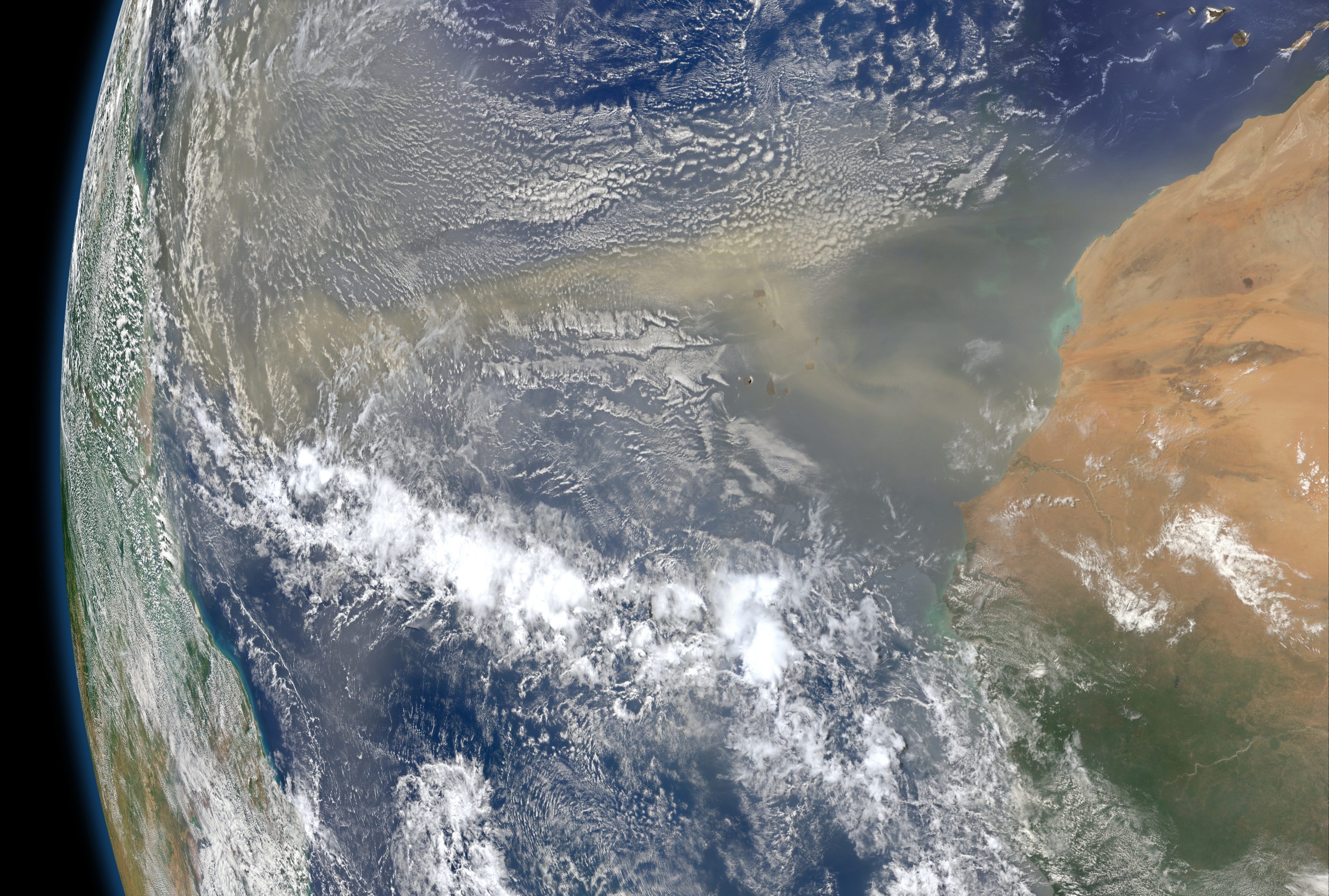
Intense Dust Emissions Carried Plumes 8,000 km from Sahara Desert and Across Atlantic Ocean to the Caribbean and Southern United States
Researchers from Khalifa University’s Environmental and Geophysical Sciences (ENGEOS) Laboratory have discovered that the gigantic dust storm in June 2020 was the result of a ‘subtropical high’ off the western coast of the Saharan desert.
The ‘subtropical high’ is an area of high pressure, which suppresses precipitation and cloud formation, and has variable winds mixed with calm winds. Subtropical highs, otherwise known as ‘horse latitudes’ or ‘subtropical ridges’, are the latitudes between 30 and 35 degrees both north and south, where earth’s atmosphere is dominated by the high pressure area.
During the second-half of June 2020, this high pressure increased the north-south pressure gradient over the Saharan region, which resulted in the intensification of the northeasterly winds, producing highly intense dust emissions. In fact, the emissions were so intense that they were able to carry the Saharan dust plumes for approximately 8,000 km across the Atlantic Ocean to the Caribbean and the southern United States from 14 to 25 June 2020. Generally, on an average, a dust storm lasts only for two to three days.
The June 2020 phenomenon was made possible because the ‘subtropical high’ enhanced the north-easterlies that are responsible for dust emissions, and the anti-cyclonic circulation associated with the African Easterly Jet (AEJ), a jet stream around 5-km in altitude above the Saharan desert, moving from east to west. The intensification of the AEJ favored a rapid westward transport of the emitted dust, before the dust particles were able to settle, according to a paper by Dr. Diana Francis, Senior Scientist, Head of ENGEOS Lab, Khalifa University. The paper was published today in the journal Geophysical Research Letters GRL.
Previous studies on large dust storms over the Sahara and the Middle East have linked the occurrence of highs and lows in the mid-latitudes and subtropics to the reduced sea ice cover in the Arctic and the Arctic warming. By losing sea ice, the temperature gradient between high-latitudes and the subtropics/tropics is less steep, thus making the polar jet slower. When the polar jet is slow, it meanders, creating persistent highs and lows in the subtropics and mid-latitudes.
The study by Dr. Francis has found that dust emissions continued as long as the (subtropical) ‘high’ remained stationary and ceased only when the ‘high’ merged with the general circulation again by 25 June. The paper explains the causes of the ‘Godzilla’ dust storm and links it to the global circulation and possible changes in the Arctic.
Highlighting the storm’s significance to the GCC region, Dr. Francis said: “The most intense dust storm to date in the Arabian Gulf region occurred in September 2015 and caused disruption to normal life, impacting some of the strategic installations. This event was actually caused by disturbances in the polar jet as well, which led to the formation of a dry cyclone and emitted a large amount of dust, according to our previous studies in 2019. It is important to shed light on the causes and the state of variability of dust storms, both the frequency and the intensity, over the major dust sources around the globe.”
The Saharan desert is the major dust source followed by the Arabian Peninsula, which comes second in terms of the total amount of dust aerosols emitted annually.
Since desertification is expected to increase in the Arabian Gulf region due to climate change and rising temperatures, the study suggests initiatives are necessary to mitigate this environmental and economic threat, perhaps by increasing the vegetated areas by planting trees and other type of flora.
Dr. Francis added: “Studies on the dust storms will help understand their long-term variability and identify the main drivers from regional to global scale, in order to improve our capabilities in predicting them and predict their impacts on the daily life and activities.”
As for forecast, based on the results of the published study, for instance, the researchers have found that the development of a ‘wave-train’ in the northern hemisphere with alternated highs and lows would be an indicator of the potential occurrence of extreme weather events over the subtropics and tropics. The ‘subtropical high’ was part of a wave-train in the northern hemisphere.
“The importance of identifying the causes of such extreme events and their link to the global circulation resides in the fact that this will help to predict them at least a few days in advance,” concluded Dr. Francis.
Clarence Michael
English Editor Specialist
1 December 2020






